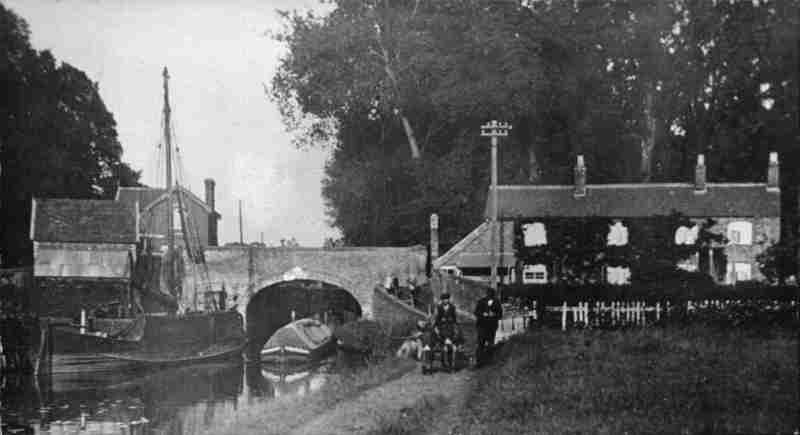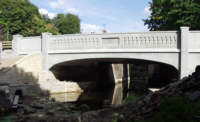
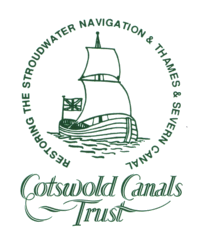 Pike Bridge Project
Pike Bridge Project
History
A Brief
History of the Cotswold Canal
Pike Bridge was constructed in about 1777 to carry the turnpike road to Eastington over the tail of Pike Lock of the Stroudwater Navigation. The original bridge was a traditional brick humpback bridge and would have been of a similar design to Newtown Roving bridge which can still be seen about half a mile to the east. The name derives from the turnpike road and not the fish, although in former years it was also known as Eastington Bridge.
The bridge was located very close to a right angled bend on the road and both its height and its limited width caused problems almost from the outset. In 1823, the height was reduced by 15 inches and the width extended by 3 feet by the Canal Company but the work was paid for by the Turnpike Trust. In 1870, the Turnpike Trust was given permission to widen the bridge still further.
The biggest change took place in 1924 when the bridge was widened considerably by an unusually attractive concrete extension on the west side side of the structure. The canal itself fell into disuse after W.W.II and was abandoned by Act of Parliament in 1954 at which point the ownership of the bridge passed from the Canal Company to Gloucestershire County Council as the highways authority.
The bridge survived until 1970 when it was demolished as part of a comprehensive road improvement scheme which saw the building of the M5 and a new link road which bypassed Eastington. Cine film and photographs of the demolition work show that the arch was removed but that the abutments were left in situ and the bridge hole, together with the adjacent lock infilled with loose material.
In 1972 and largely as a result of all the destruction caused by this road scheme (which involved the loss of several other structures - often without need) the Stroudwater Canal Society was formed. By 1975, this had become the Stroudwater, Thames and Severn Canal Trust (now renamed the Cotswold Canals Trust) and in 1978, volunteers started clearing and restoring the canal in the Eastington area. This was a strategic move as plans had already been drawn up to build a new road along the canal eastwards which would have resulted in further blockage and the loss of more canal, bridges and locks.
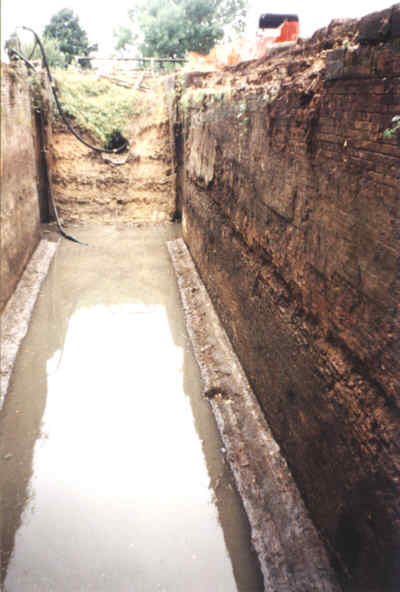 |
Pike Lock in 1990 following excavation but prior to brickwork repairs showing the infill where Pike Bridge used to be. |
In 1992 HRH The Prince of Wales visited Eastington to re-open a length of canal from Pike Lock to Newtown Roving Bridge and to see volunteers working on the restoration of Pike Lock itself.
Work continued on the Eastington flight of locks with the excavation of Dock Lock, which is located downstream (west) of Pike Bridge. Volunteers, excavating the lock with machinery owned by the Trust, found large chunks of the concrete part of the deck of Pike Bridge which had been dumped there.
Of the five original locks at Eastington, Newtown and Blunder are fully working, Pike and Dock Lock are virtually complete awaiting regating and Westfield (the one at the bottom) is still infilled awaiting restoration.
There is little point in regating Pike and Dock Locks until Pike Bridge has been rebuilt.
Details of how the bridge was restored so that the surviving structures were retained and exposed are outlined in the technical section .
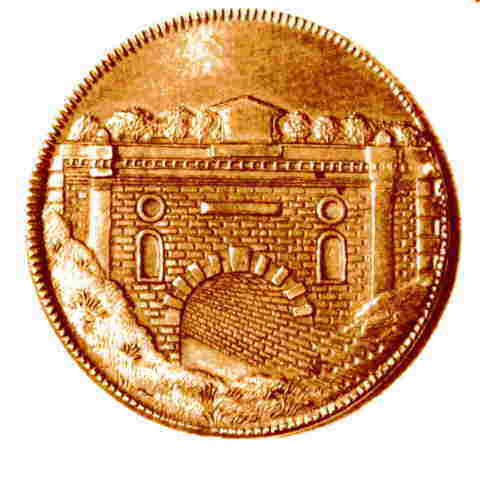 |
A Brief History of
the Cotswold Canals
|
 |
The waterway between the rivers Thames and Severn consists of two canals which meet end on in Stroud. The first to open was the Stroudwater Canal which was build between 1775 and 1779 but was itself the third in a series of attempts to link the woollen mills of Stroud to the River Severn. It is a broad canal designed to take Severn Trow of up to 68ft in length and a beam of 15 ft. These craft could carry cargos of up to 100 tons. The Thames & Severn Canal was built between 1783 and 1789 and was a much greater engineering feat as it climbed to Sapperton Tunnel which pierced the Cotswold Scarp. The tunnel was the longest built at the time of construction but was also of one of the largest in cross section.
The completion of the T&S Canal provided the first inland waterway route between London and the Midlands but the poor state of the Thames navigation upstream of Oxford was to greatly limit the success of the through route.
The opening of the Kennet and Avon Canal captured most of the Bristol trade and the coming of the railways in the mid 1840s started a slow decline in trade from which the canals would never recover.
The summit level of the T&S Canal always required careful maintenance and water supplies from the River Churn in Cirencester needed to be supplemented by pumping at Thames Head using a beam engine. As trade declined in the late 19th century, the water levels on the summit were frequently allowed to drop to levels which caused navigation to become impossible.
The T&S Canal's plight became worse when control of the canal company fell into the hands of the Great Western Railway who, in the 1890s, sought to close the eastern part of the canal. A Trust was formed to restore the canal but this ran out of money and Gloucestershire County Council took over. The GCC did reopen the canal at the turn of the century but the levels of trade were insufficient to justify maintenance costs and the last boat traversed the whole canal in 1911. The canal east of Chalford was abandoned in 1927 and the rest in 1933.
The Stroudwater Navigation did not suffer the high maintenance costs of its younger brother and successfully captured a considerable amount of local trade, mainly supplying coal to the many mills in the Stroud Valley. However, commercial traffic ceased in W.W.II and the canal was formally closed in 1954 although The Company of Proprietors of the Stroudwater Navigation , its owners, continued to exist.
Both the T&S Canal and the Stroudwater Navigation are the subject of restoration proposals. The Cotswold Canals Trust has spear headed the campaign for 30 years and resulted in the formation of the Cotswold Canals Partnership which includes all the Local Authorities along the line of the canal, the Environment Agency, the Cotswold Canals Trust, The Waterways Trust and about a dozen other organisations. Various sections of the canal have been restored to full navigation including some of the flight of locks at Eastington and a recent decision to provide £12m of Heritage Lottery Grant coupled with matched contributions from other sources will see the restoration of 6 additional miles of canal between Stonehouse and Brimscombe Port within the next four years under the leadership of Stroud District Council.
3
Home | Location | History | Technical | Pictures | Background Information | Contacts | Links
This document is maintained by ken.burgin@pikelock.com .
Copyright © 2004 Cotswold Canals Trust; all other rights reserved








